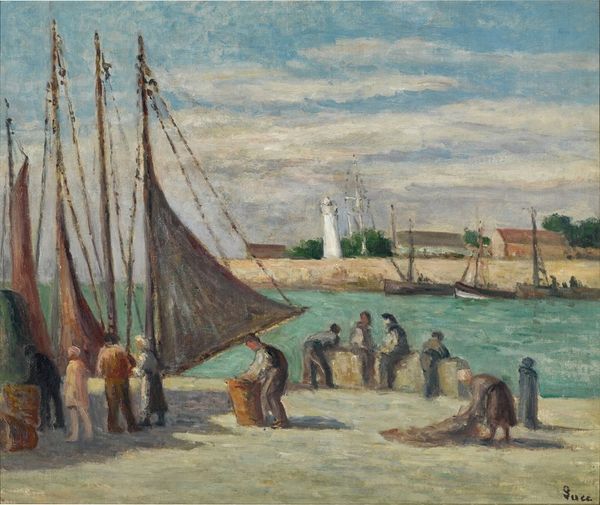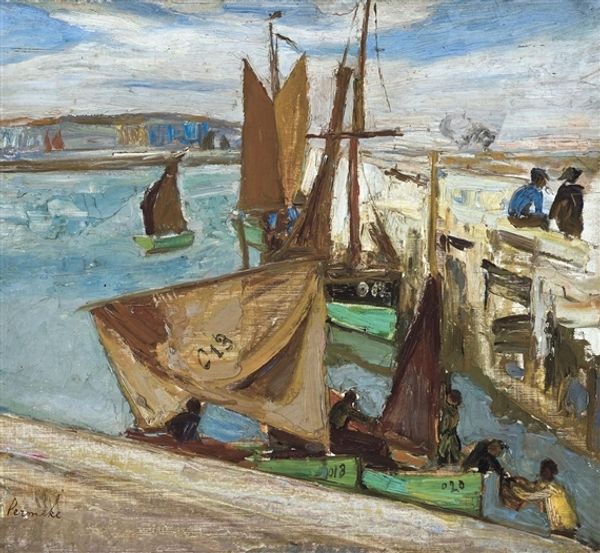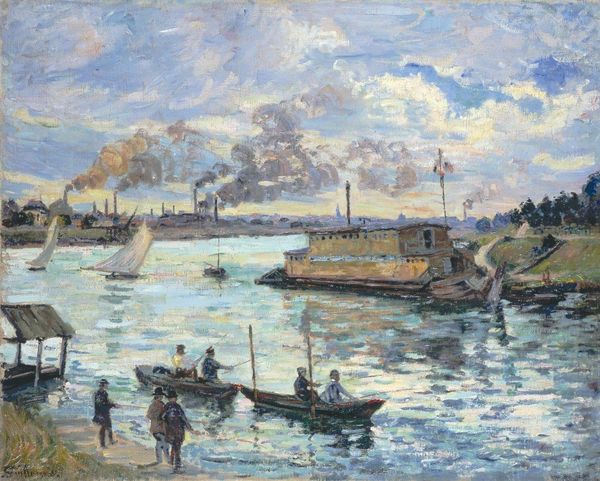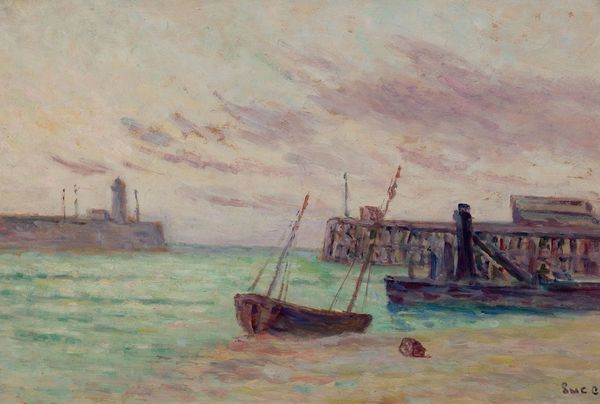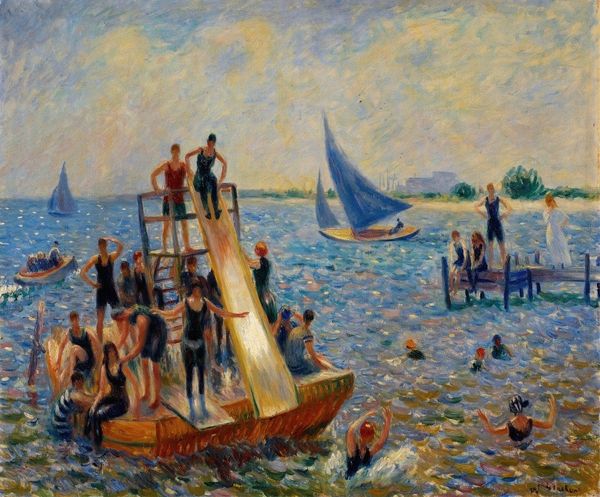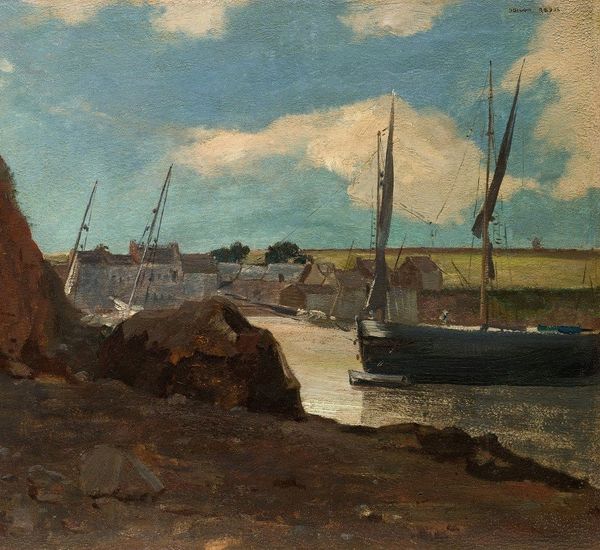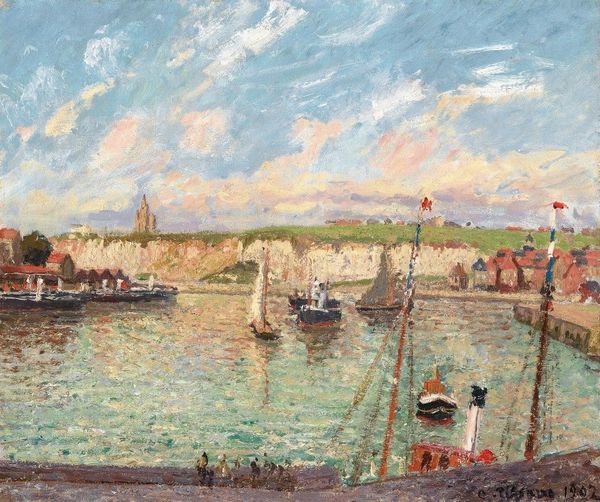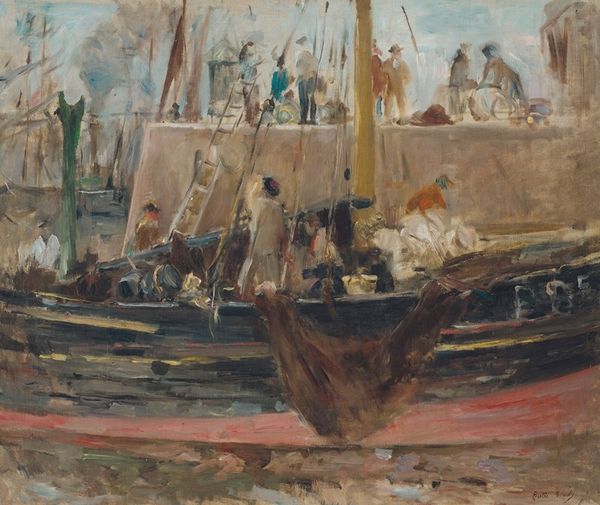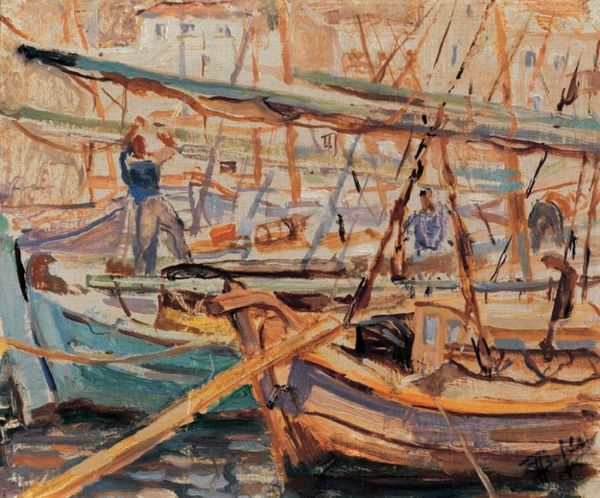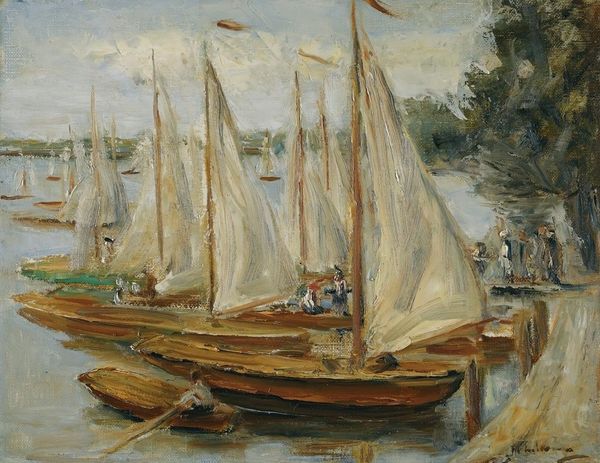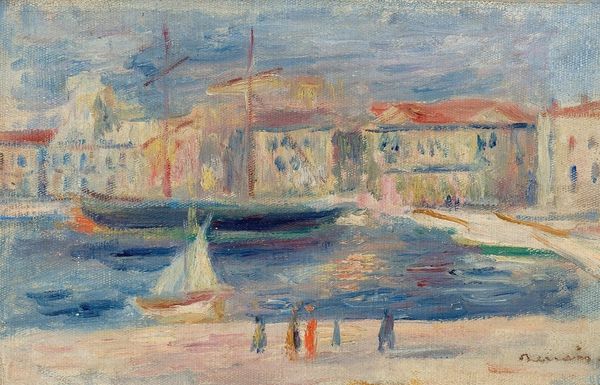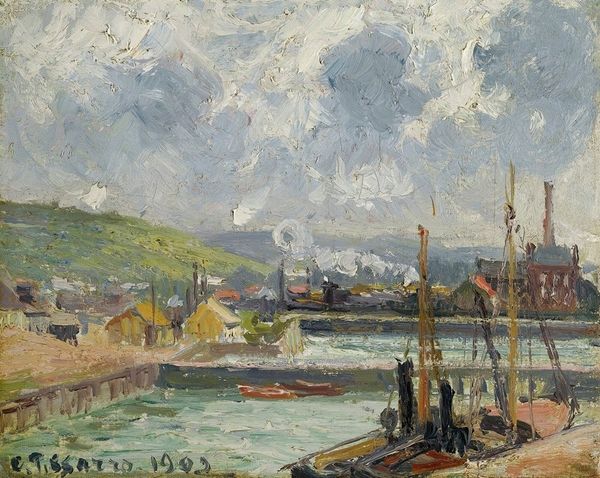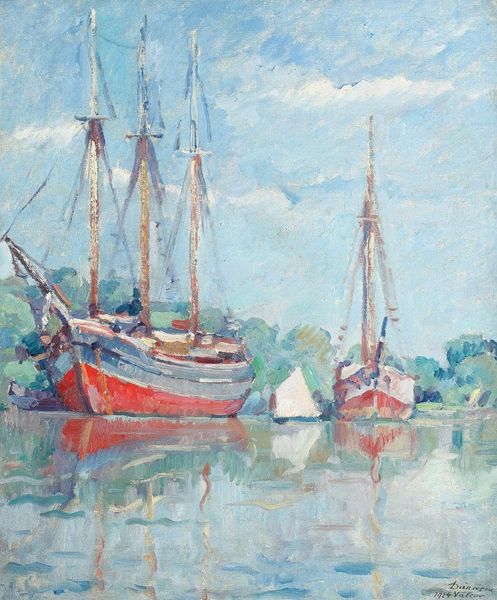
Copyright: Public Domain: Artvee
Curator: Here we have Maximilien Luce’s “Honfleur, remorqueur à quai,” painted in 1929. I am struck by how simultaneously peaceful and industrial this harbor scene feels. What catches your eye initially? Editor: The light, absolutely. It's that diffused, slightly melancholic light of a port city that evokes a very particular kind of stillness amidst labor. It’s a working landscape, yet imbued with a certain… waiting. Curator: Precisely. Luce captures the everyday, but with this delicate dance between observation and... feeling, perhaps. His post-impressionist brushstrokes almost vibrate with the scene's energy, focusing not just on form, but the play of light and shadow, like on that towering tugboat’s smokestack. Editor: That interplay also points to class and industry. The looming ship, juxtaposed against the workers toiling below, hints at the engine of capital. What stories do those anonymous figures tell us, and how does Luce situate their bodies within this system? Curator: An interesting perspective. To me, these figures seem integral; Luce painted laborers throughout his career, always endowing them with dignity and respect. Though yes, they’re certainly *part* of the harbor's ecosystem—and, as you suggest, the economic forces at play—there’s an honest observation, not exploitation, in his rendering. It has a bit of Daumier's sense of humanity, right? Editor: I can see that parallel, although Daumier often infuses a sharper critique. Here, the soft brushwork and pastel palette feel more contemplative, perhaps even romanticizing the port. However, it begs the question: who is this 'everyday' for? And whose perspectives are valorized? Curator: That's always an essential question, isn't it? Still, despite what underlying critiques we might interpret today, there’s something timelessly appealing to me about how Luce managed to turn the mundane activities of a harbor into something quietly monumental. Editor: I agree, and that’s the power of art, to invite these layered perspectives. Looking at Luce's "Honfleur," one encounters a past—not of pristine shores, but one actively worked and weathered. A great snapshot of a particular time! Curator: Beautifully put. It invites us, as viewers, to ponder the connections—seen and unseen—between industry, labor, and even the simple beauty of a cloudy sky over water.
Comments
No comments
Be the first to comment and join the conversation on the ultimate creative platform.
